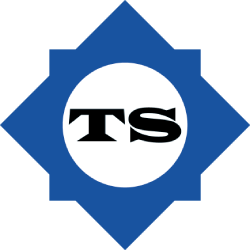Field STC Testing
- Experienced Operators
- Proven Equipment
- Tailored Service
Transformational Security LLC offers field testing services for Apparent Sound Transmission Class (A-STC) and Noise Isolation Class (NIC) to ensure that a structure is capable of keeping a private conversation private.
Why Test?
Testing the acoustical performance of interior walls or other partitions is a common practice in building construction.
Architects normally specify the STC rating of walls and doors, especially when they are the perimeter walls or door for a SCIF or a secure conference room. Specifying the STC rating provides a standard for the general contractor to build to.
In most cases, the federal government requires that SCIFs and other secure rooms meet a minimal STC rating, such as STC 45 or 50. Clients, program and project managers, owners’ representatives, etc., all want to ensure the contractor or industry trades have built the walls (or door assembly) to the specifications listed in the architectural plans. If an STC rating of 50 is specified, the builder must comply and build a wall that achieves a field STC rating of 50. If they did not build the wall correctly, someone talking inside the room may be able to be heard outside the room.
Definitions
- STC—Sound Transmission Classification; the higher the number of an STC rating, the more difficult it is to hear the occupants inside the room from outside the room
- White Noise—A signal with a constant power spectral density
- Pink Noise—A signal whose power spectral density is inversely proportional to its frequency
- SPL—Sound Pressure Level, measured in decibels (dB)
- SLM—Sound Level Meter, used to measure SPL
- LF, HF—Low frequency, high frequency
STC testing often verifies whether the wall provides the correct level of acoustical protection. If the wall was not built to the published STC rating, the builder will normally be required to bring the wall or door assembly into compliance by reworking the wall, adjusting the gaskets around the doors, or modifying the wall itself, which could prove to be a very costly endeavor.
To be clear, if an STC rating is specified at 50 and is written into the contract, the contractor must ensure the wall or door assembly meets that rating. Verifying the wall's performance is normally required in many SCIF construction projects or corporate secure conference rooms. The requirement for testing and compliance should be written into every contract when building these types of secure rooms.
The ASTM E336-14 standard outlines the tools, processes, and test method for evaluating the sound-insulating properties of interior walls, doors, or partition elements for a building. Typically, one would be testing the sound-isolating performance between two rooms. This standard specifies the type of hardware needed to perform the test, and the tasks and actions to be conducted to gather the analytical data needed to derive the STC rating of the test site. The calculations needed to determine the measured STC value are outlined in ASTM E413.
Performing a Test

Performing a field STC test requires specialized hardware and software.
A white or pink noise sound generator is normally connected to either a high-power amplifier that drives a high-output speaker or some type of hybrid generator/amplifier/speaker unit capable of generating an extremely loud, distortion-free sound output — typically upwards of 125 SPL. Omni-directional speakers are ideal, but directional speakers are also permitted. The hardware also needs to satisfy the requirements in ANSI S1.43 for Type 1 Sound Level Meters. Additionally, a field calibrator is used to verify the sensitivity of the microphone and hardware each time, before and after each field STC test.
For STC field testing, we use a state-of-the-art integrating Sound Level Meter (SLM) which meets the standards ANSI S1.4 and ANSI S1.11 for Class 1.11-2004 (USA), IEC 61672 (international). The meter is connected to a certified Type 1 Microphone (in accordance with IEC 61672).
The system is then calibrated using a precision microphone calibrator. Both the SLM and Type 1 microphone are calibrated to a reference traceable to the National Institute of Standards and Technology (NIST). Our high-output, ruggedized speaker is a modified loudspeaker with an ultra-efficient built-in Class-D amplifier capable of delivering 2000 watts of power in an ultra-compact design. Using two vertically aligned common-magnet drivers with an 8” LF woofer and 1.75” HF compression driver capable of clean power greater than 125 dB SPL.
Finally, our PointSource™ Field STC Software is capable of performing fast, WYSIWYG single-point STC field tests when operating in “Quick Test Mode.” For complex facility testing, we are able to conduct detailed multi-point STC testing using the advanced “Facility Mode.”
We provide STC field testing services to general contractors, architects, and government/corporate program managers. We provide a detailed test report of the measured STC rating of the test area, which includes the method of test, test equipment, test procedures, and graphs and charts of the mathematical results.
Audio Countermeasures Consulting
Making a secure conference room is no easy task. There are dozens of factors that can impact the acoustical integrity of an office space designed for privacy. We are often asked:
- “We built an STC-rated wall, but you can hear right though it! What do I do?”
- “My door does not meet an STC rating of 45. What can I do to get my SCIF accredited?”
- “The contractor is telling me the door is installed properly, but how do I verify it?”
- “I need to install a soundmasking system. What are my options, and what is the most effective speech- or soundmasking system available?”
We provide a range of audio consulting services to general contractors, architects, and government/corporate program managers, including STC education, noise control techniques, soundmasking system design and installation, and advanced voice privacy techniques — our broad spectrum of services can address all your acoustic privacy concerns.
Contact Us & Find Out More